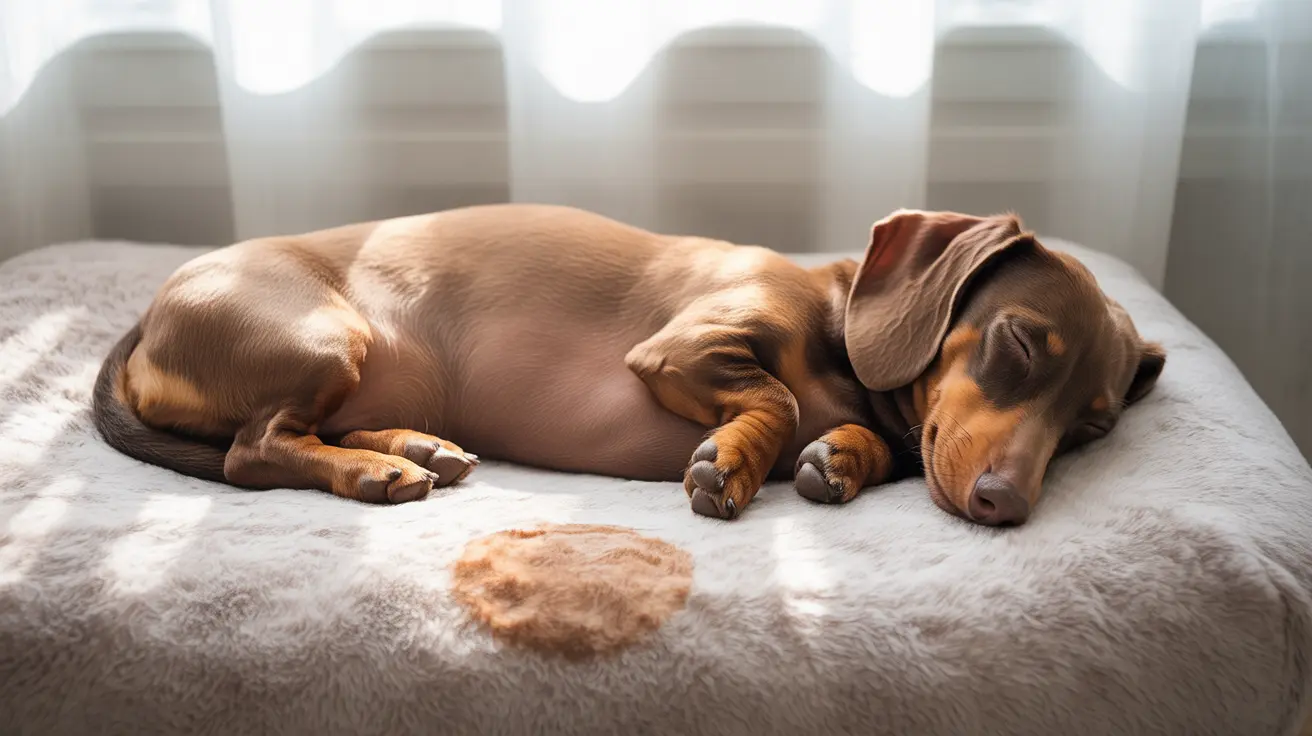Discovering your female dog is peeing in her sleep can be concerning and frustrating for any pet owner. This involuntary urination, known as urinary incontinence, affects up to 20% of spayed female dogs and can occur for various reasons. Understanding the causes and available treatments is crucial for maintaining your pet's health and quality of life.
In this comprehensive guide, we'll explore why female dogs experience sleep-related urinary incontinence, what you can do about it, and when you should seek veterinary care. We'll also provide practical solutions to manage this condition effectively.
Common Causes of Nighttime Urinary Incontinence
Hormonal Changes After Spaying
The most common cause of female dogs peeing in their sleep is hormone-responsive incontinence, particularly in spayed dogs. When females are spayed, their estrogen levels decrease significantly, which can weaken the urethral sphincter muscles responsible for bladder control. This condition typically appears anywhere from a few months to several years after spaying.
Medical Conditions
Several health issues can lead to nighttime urination, including:
- Urinary tract infections (UTIs)
- Bladder stones or tumors
- Diabetes or kidney disease
- Cushing's syndrome
- Spinal cord issues
- Neurological disorders
Identifying the Problem
Physical Signs
Look for these common indicators:
- Wet spots on bedding
- Damp fur around the hindquarters
- Skin irritation or redness
- Strong urine odor
- Increased thirst or urination frequency
Risk Factors
Certain factors increase the likelihood of developing this condition:
- Being a spayed female
- Middle age or senior status
- Obesity
- Certain breed predispositions
- History of urinary tract problems
Treatment Options and Management
Medical Interventions
Your veterinarian may recommend:
- Hormone replacement therapy
- Medications to strengthen sphincter muscles
- Antibiotics if infection is present
- Surgery in rare cases
Lifestyle Management
Practical steps to manage the condition include:
- Regular bathroom breaks, especially before bedtime
- Maintaining a healthy weight
- Using waterproof bedding
- Keeping the affected area clean and dry
- Monitoring water intake timing
Prevention and Long-term Care
While not all cases of urinary incontinence can be prevented, these steps can help minimize episodes:
- Regular veterinary check-ups
- Proper weight management
- Consistent exercise routine
- Good hygiene practices
- Prompt treatment of any urinary tract infections
Frequently Asked Questions
Why is my female dog peeing in her sleep and what causes this nighttime incontinence?
Female dogs typically pee in their sleep due to weakened urethral muscles, often caused by decreased estrogen levels after spaying, age-related changes, or underlying medical conditions. The relaxation that occurs during sleep can make this problem more noticeable.
How can hormonal changes after spaying lead to my female dog leaking urine while sleeping?
Spaying reduces estrogen production, which normally helps maintain urethral muscle tone. Without sufficient estrogen, these muscles can weaken, leading to involuntary urination, particularly during sleep when muscle relaxation is greatest.
What medical conditions should I watch for if my female dog is wetting the bed at night?
Watch for signs of urinary tract infections, diabetes, kidney disease, bladder stones, or neurological issues. Additional symptoms might include increased thirst, frequent urination, pain while urinating, or changes in behavior.
What treatments and lifestyle changes can help manage urinary incontinence in female dogs?
Treatment options include hormone replacement therapy, medications to strengthen bladder muscles, and lifestyle changes such as regular bathroom breaks and weight management. Your vet can recommend the most appropriate treatment based on the underlying cause.
When should I take my dog to the vet if she is peeing in her sleep or having accidents?
Seek veterinary care if you notice sudden onset of symptoms, blood in urine, signs of pain or discomfort, increased thirst, or if the condition affects your dog's quality of life. Early intervention typically leads to better outcomes.
Conclusion
While female dogs peeing in their sleep can be distressing, it's usually manageable with proper veterinary care and lifestyle adjustments. Don't hesitate to consult your veterinarian if you notice this issue, as early intervention can prevent complications and improve your pet's comfort and well-being.






